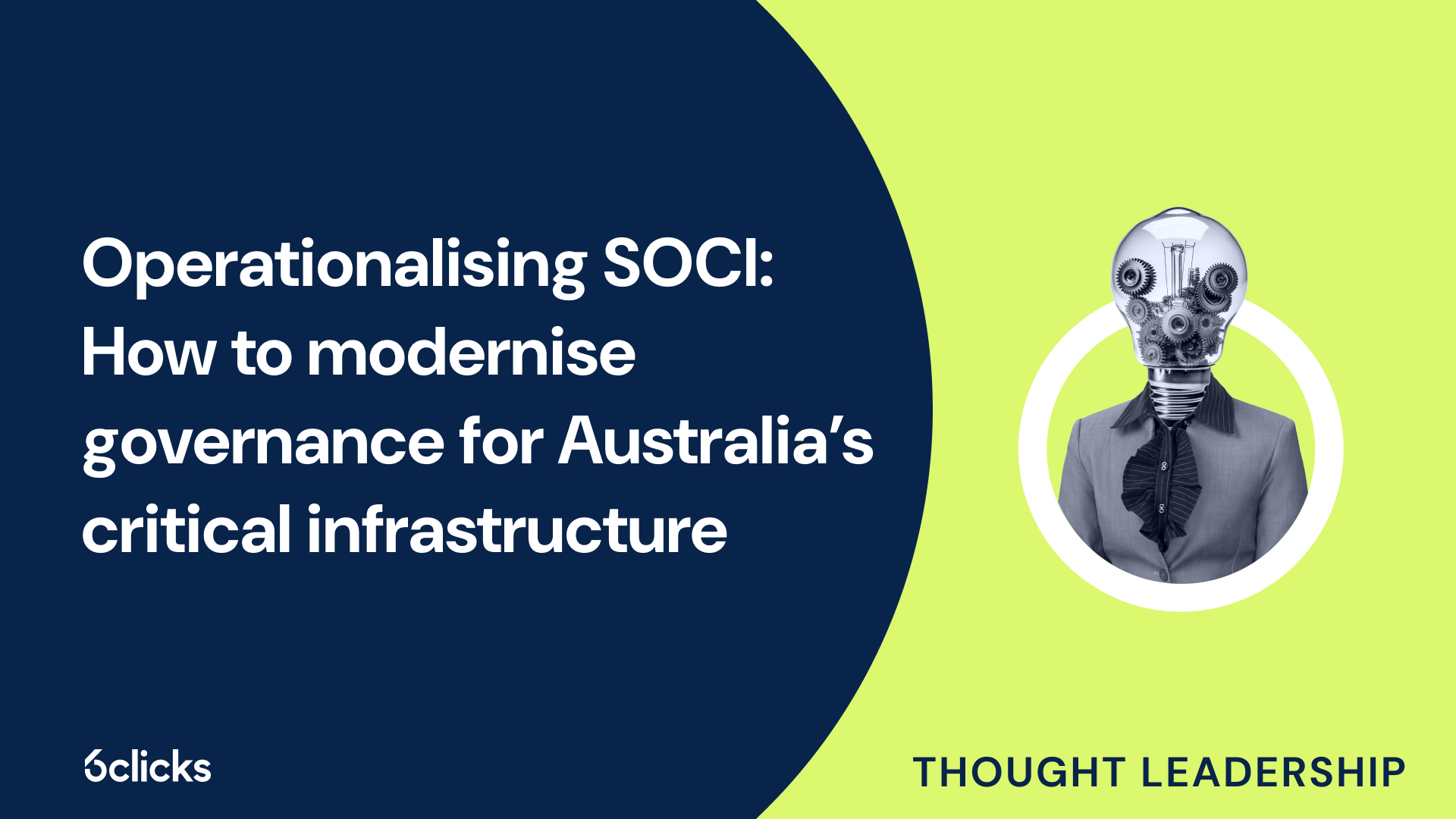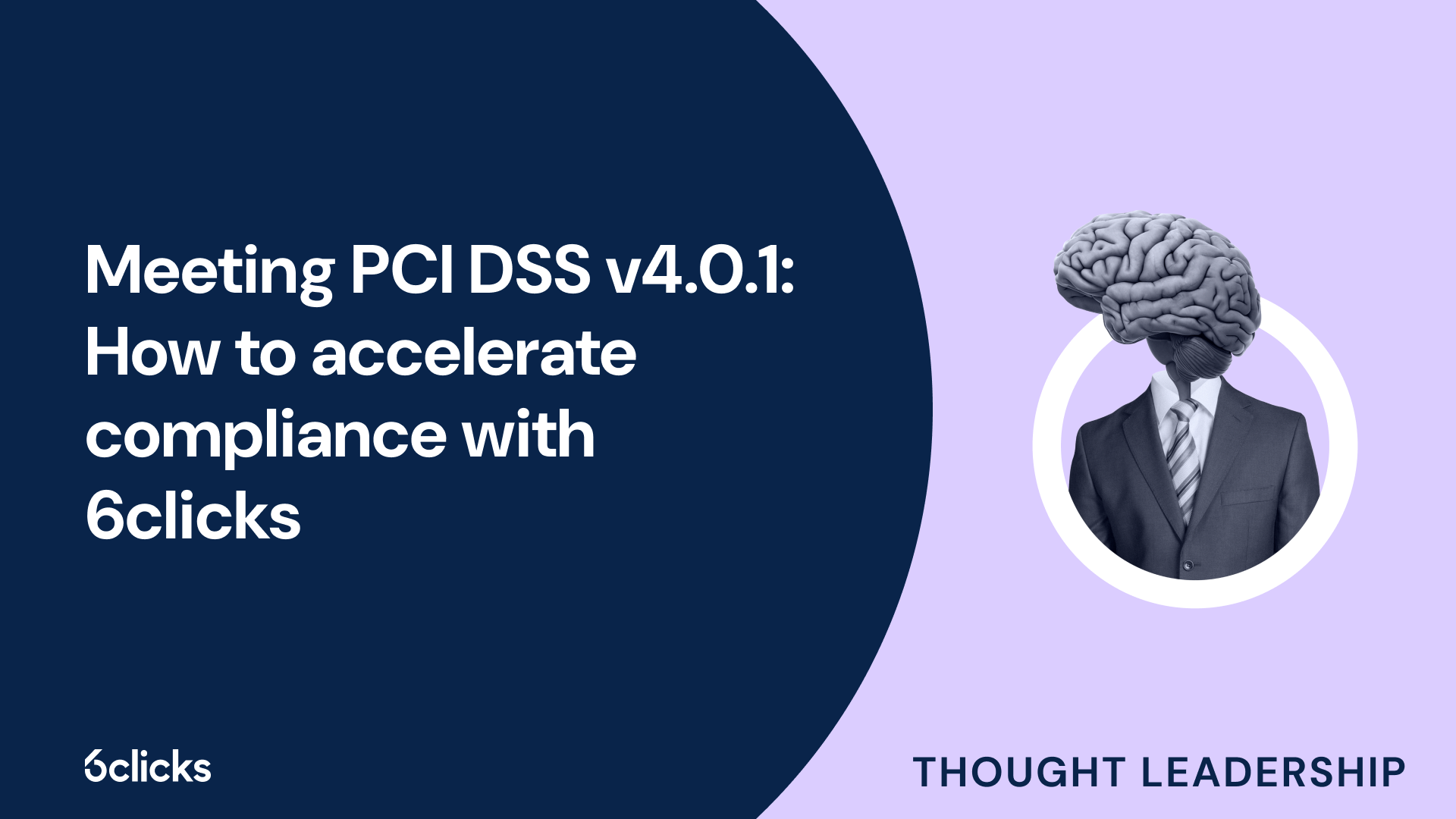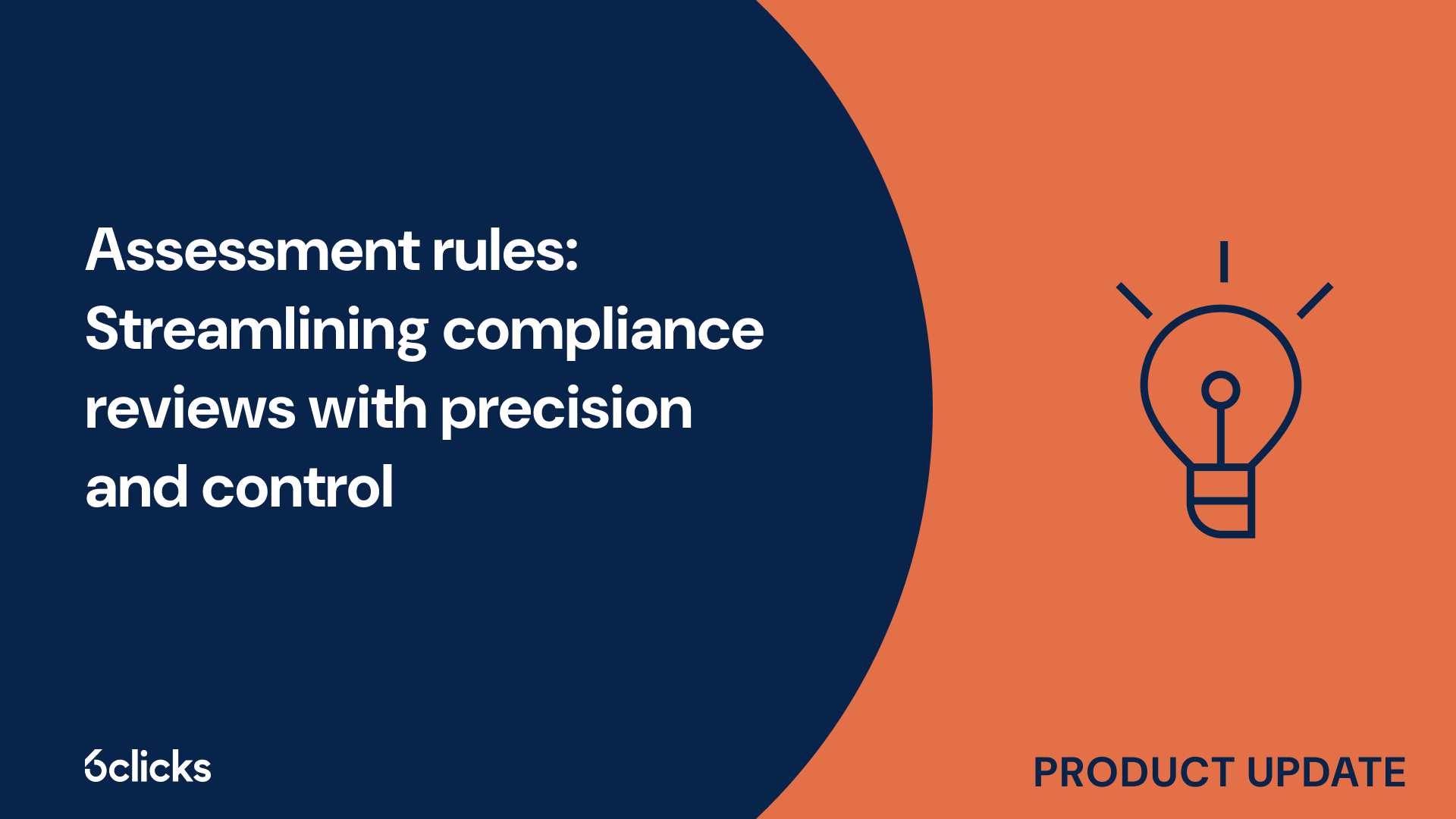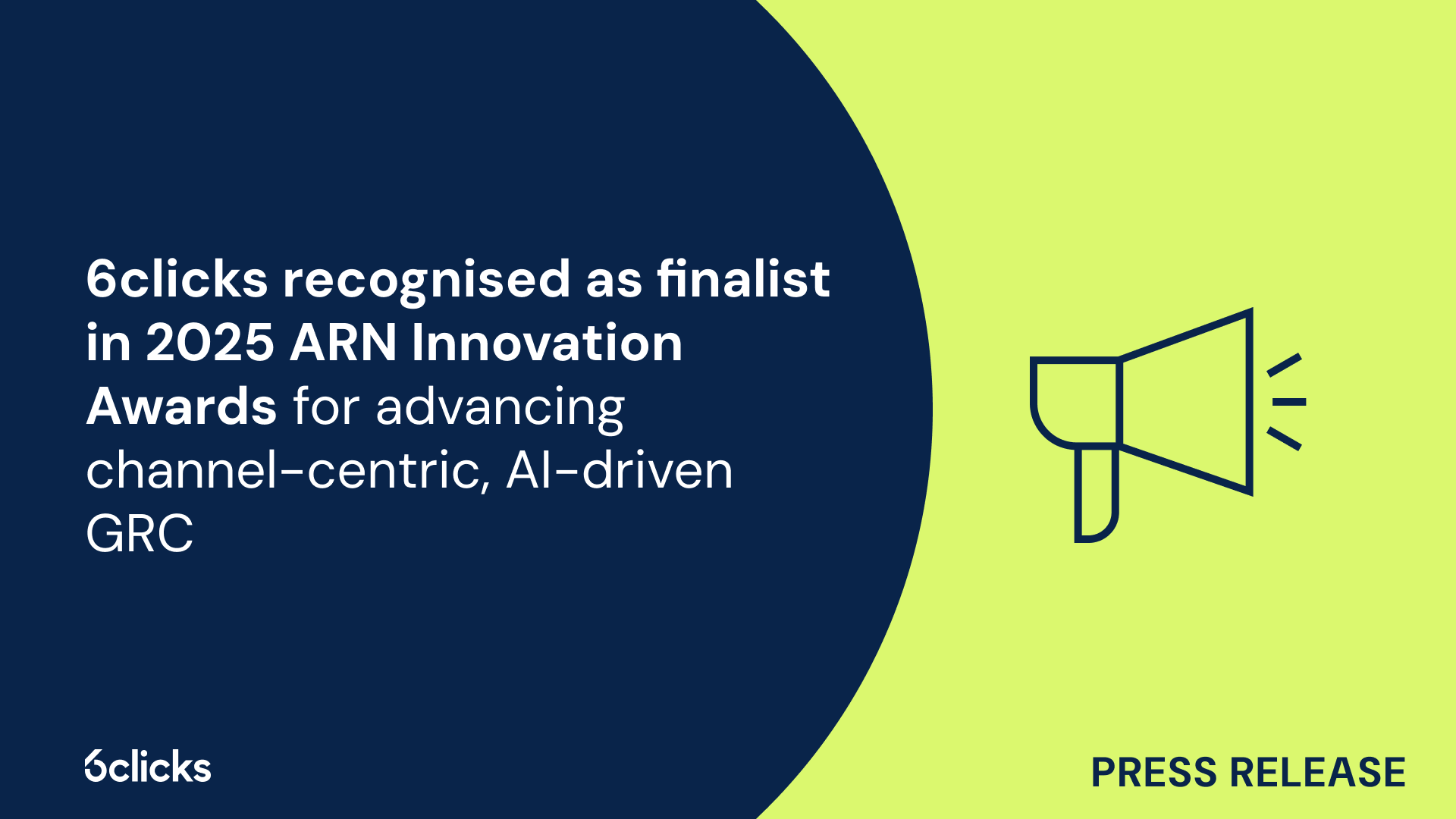The GRC buyer’s guide for 2025: Building resilience with AI-powered, federated solutions
Discover the ultimate GRC buyer's guide for 2025! Uncover how AI-powered, federated solutions transform compliance and security management for industries like government, aerospace, banking, and more. Learn about centralized control, continuous compliance, and advanced cyber GRC capabilities. Download now!
-1.png?width=200&height=249&name=Group%20193%20(1)-1.png)
The GRC buyer’s guide for 2025: Building resilience with AI-powered, federated solutions
Definition of ERM
Enterprise Risk Management (ERM) is a comprehensive approach to risk management that goes beyond traditional risk management practices. ERM is a strategic and holistic approach that considers the entire organization, its strategic objectives, and potential risks and events that could impact the achievement of those objectives. ERM focuses on aligning risk management with the organization's strategic goals and takes a proactive and forward-thinking approach to identifying, assessing, and managing risks. Unlike traditional risk management, which often takes a risk-averse approach and focuses on the effects of risk after they occur, ERM aims to inform decision-making and mitigate risks before they materialize. It involves the management of both insurable and non-insurable risks, such as operational, financial, legal, technology, and strategic risks. ERM provides a valuable decision-making tool for organizations, allowing them to navigate uncertainties, adapt to changing business environments, and enhance their overall resilience and performance. The role of a Chief Risk Officer (CRO) or risk managers is crucial in implementing and maintaining an effective ERM framework within an organization, ensuring that risk management is integrated into the fabric of the entire enterprise.
Definition of risk management
Risk management is a crucial process for organizations to identify, assess, and mitigate potential threats that may hinder their strategic goals and overall well-being. It aims to minimize the negative effects of risk and maximize opportunities for success.
The purpose of risk management is to ensure the organization's resilience by providing a comprehensive approach to risk that goes beyond addressing individual risks in isolation. By taking a holistic approach, risk management considers the entire organization, its strategic objectives, and its risk appetite.
There are various types of risks that organizations typically manage. Regulatory risks involve compliance with laws and regulations that may impact the organization's operations and reputation. Operational risks refer to internal processes and activities that can result in financial losses or harm the organization's ability to deliver products or services. Cyber risks pertain to the threats associated with digital systems, networks, and data breaches. Financial risks involve exposure to potential financial losses or disruptions in the market. Compliance risks relate to adherence to internal policies and procedures, industry standards, and legal requirements. Hazard risks deal with physical hazards such as natural disasters, accidents, or other unforeseen events.
By actively managing these different types of risks, organizations can make informed decisions, protect their assets, and enhance their overall resilience. Risk management is an invaluable tool for ensuring the organization's long-term success and sustainability.
Key differences between ERM and risk management
Enterprise Risk Management (ERM) and traditional risk management are two distinct approaches to managing risks within an organization. ERM takes a broader and more strategic view, considering risks in the context of the organization's overall goals and objectives. It involves identifying, assessing, and prioritizing risks that can impact the achievement of strategic goals. On the other hand, traditional risk management tends to focus on specific risks or hazards and mitigating their effects. ERM adopts a comprehensive approach that encompasses all types of risk, including strategic, operational, financial, and compliance risks. In contrast, traditional risk management often focuses on specific risk categories or department-level risks. ERM also emphasizes a proactive approach to risk management by identifying potential events and their potential impact, while traditional risk management tends to be more reactive, addressing risks as they arise. Additionally, ERM considers the entire enterprise, taking into account the interconnectedness of risks throughout the organization and their potential cascading effects. Traditional risk management, on the other hand, may have a narrower scope, focusing on specific functions or processes. Overall, ERM provides a valuable decision-making tool for senior leaders and risk managers to prioritize and manage risks within the organization, guided by a comprehensive risk management framework.
Difference in scope
The main difference in scope between ERM (Enterprise Risk Management) and traditional risk management lies in their approach to assessing and managing risks. Traditional risk management typically focuses on assessing and controlling risks within specific departments or functional areas of an organization. It primarily aims to mitigate risks that are directly related to the operations of those departments or functions.
On the other hand, ERM takes a more holistic approach to risk management. It considers risks throughout the entire business, taking into account the potential spread and impact of these risks on different functions and departments. ERM considers the interconnectedness of risks and their potential effects on the organization as a whole.
By adopting a comprehensive approach, ERM allows organizations to align their risk management practices with their strategic objectives and overall risk appetite. It helps businesses identify and prioritize strategic risks that could affect the achievement of their goals and objectives.
Difference in approach
Traditional risk management tends to adopt a siloed and reactive approach, focusing on individual risks within specific departments or functions. This fragmented approach often lacks collaboration and fails to consider the interconnectedness of risks across the entire organization. It typically involves identifying and mitigating risks on a department level rather than taking a broader view.
In contrast, Enterprise Risk Management (ERM) takes a holistic and proactive approach to managing risks. ERM recognizes that risks are not isolated events confined to individual departments; rather, they can have ripple effects throughout the entire enterprise. It emphasizes the interconnected nature of risks and seeks to understand their potential impacts on various functions and departments.
By taking a comprehensive approach, ERM enables organizations to have a broader and more in-depth understanding of the risks they face. It encourages collaboration between different departments and functions, breaking down silos and creating a shared understanding of risks and their potential effects. ERM also focuses on identifying and prioritizing strategic risks that could significantly impact the achievement of organizational goals and objectives.
Difference in goal
The key difference in goal between Enterprise Risk Management (ERM) and traditional risk management lies in their respective focuses. ERM, as a comprehensive approach, aligns risk mitigation with the broader strategic objectives of the business. It understands that risks are not isolated events and can have widespread impacts throughout the entire organization.
On the other hand, traditional risk management is more operational in nature and tends to be focused on active risk management within a single area or department. Its goal is to identify and manage risks within that specific area to ensure smooth operation and prevent potential disruptions.
By aligning risk management with strategic objectives, ERM aims to integrate risk management practices into the decision-making processes of the entire enterprise. This ensures that risk considerations are taken into account when setting and pursuing strategic goals, making risk mitigation an integral part of the business strategy.
In contrast, traditional risk management is primarily concerned with operational risks at the department level. It focuses on identifying and managing risks within a specific area to protect the organization from potential threats that could hinder its normal functioning.
Overview of ERM
Enterprise Risk Management (ERM) is a comprehensive approach to risk management that takes a holistic approach to identifying, assessing, and managing risks throughout an organization. Unlike traditional risk management, which focuses on operational risks at the department level, ERM aims to integrate risk considerations into the decision-making processes of the entire enterprise. By aligning risk management with strategic objectives, ERM allows for a more informed and proactive approach to risk mitigation, ensuring that potential risks and their potential impact on the organization's strategic goals are taken into account. ERM also takes into consideration a wider range of risk types, including non-insurable risks such as strategic risks and technology risks, providing a more comprehensive framework for managing risks across the organization. As a result, ERM not only helps organizations minimize the effects of risk but also serves as a valuable decision-making tool for making informed risks and seizing potential opportunities.
What is the enterprise risk management process?
The enterprise risk management process is an integrated and joined-up approach to managing risk across an organization. It involves understanding, analyzing, and addressing risk to ensure that organizational objectives are achieved.
This process starts with a comprehensive understanding of the risks faced by the organization. It involves identifying and assessing potential risks and events that could impact the achievement of strategic goals. By taking a holistic approach, the enterprise risk management process goes beyond traditional risk management practices that focus on specific departments or types of risk.
Once the risks are understood, they are analyzed to determine their potential impact on the organization. This analysis considers the effects of risk on the entire enterprise, including its operations, supply chains, business model, and financial performance. It also takes into account non-insurable risks such as strategic risks and legal risks.
Based on the analysis, the enterprise risk management process enables the organization to develop a risk management strategy and framework. This strategy outlines the organization's risk appetite and tolerance levels, as well as the desired risk responses. It provides valuable decision-making tools to manage risks and mitigate their potential impact.







